Varieties and cultivation of penstemon

Charming perennials with the difficult to pronounce name penstemon can be found in almost every flower garden. They are distinguished by their beauty, attractiveness, and unpretentious care.
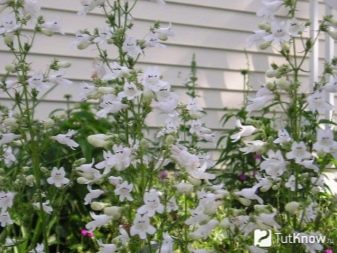
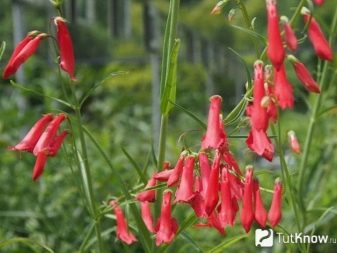
general description
"Almost a stamen" is just such a translation of the name of the plant, and all because this organ is long and extends far beyond the flower bowl... The popularity of cultivation is increasing every year. Its flowers begin to delight the eye in early June, and continue to bloom until the first frost. Growing is not at all difficult, provided that all agrotechnical rules are followed.
The homeland should be considered North and Central America. Botanists classify it as a genus of norichnikov, foreign experts refer to the genus of plantain.
In total, there are more than 250 varieties in the family.
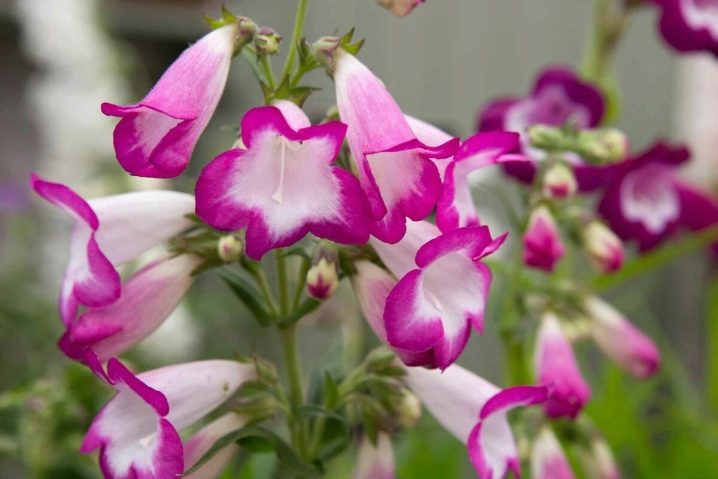
The bushes reach a height of up to 120 centimeters, with a total of 4-6 stems. The leaves have a different color: from the usual green to dark brown, the leaf form is lanceolate with solid edges, the bush is collected in a basal bunch. Stems branch weakly.
Flowering is usually long lasting, from late May to persistent frost. Flowers are in the form of an elongated bowl or glass. The color is always different: the flowers of certain varieties are painted in several colors. The life span of a plant is determined by the varietal affiliation, but on average from 2 to 7 years. The inflorescences are pollinated by bees.

Types and varieties
There are many varieties of this plant, we will list only the main most popular ones.
- Perennial Penstemon grows like a lush, showy shrub. Lanceolate foliage adorns its erect stems up to 120 centimeters high. Flowers are usually tubular or bell-shaped in various shades, collected in panicles. Blooms all summer.
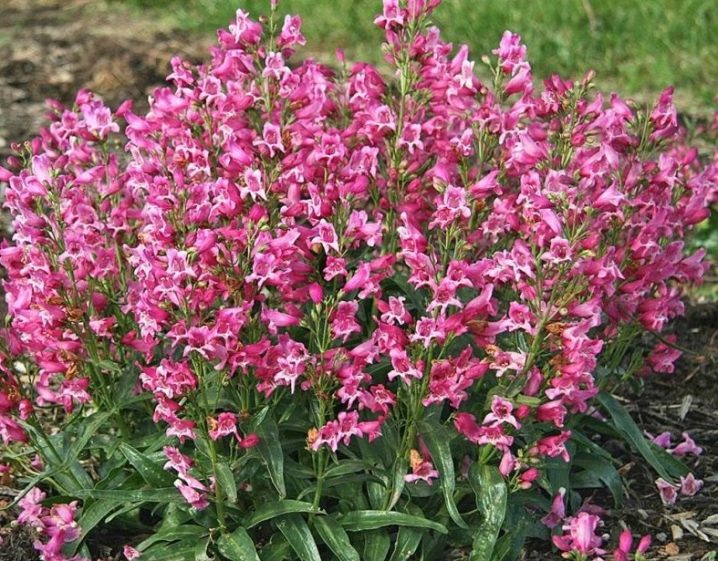
- The foxglove stretches up to a meter in height. The flowers are pinkish in color; active flowering continues until stable frosts.
Moreover, each individual flower pleases the eye with its elegance for up to a month.
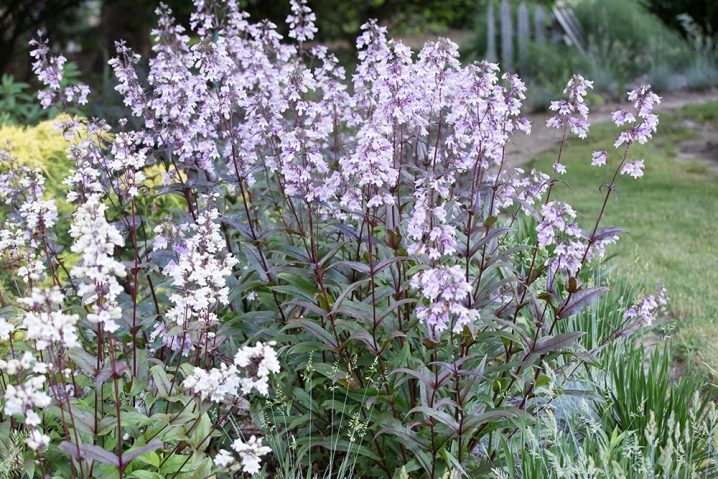
- Bearded blooms before everyone else with a lush crown. Plant height 0.9 meters, has a specific color: the scarlet color smoothly turns into white.

- Dark towers rather young variety. Differs in winter hardiness and lush flowering. The leaves are lanceolate, and the powerful panicles are composed of pink flowers. Flowering continues throughout the summer.

- Carillo ed blooms from July to October with beautiful purple panicles. Lignified shoots up to 0.6 meters high.
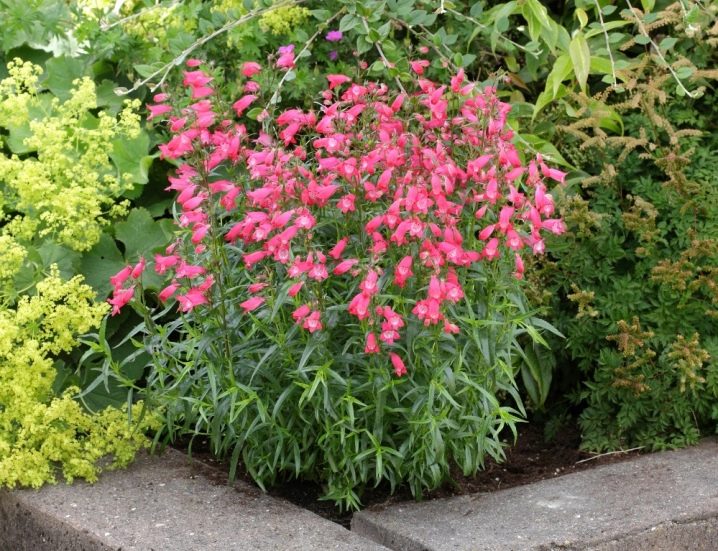
- Hartwig somewhat resembles a snapdragon. A racemose flower mixture with various shades and an unusual shape.
Vertical bushes bloom by mid-summer and bloom until late autumn.

- Penstemon Davidson (Javidson) looks like a low-growing shrub-type plant. The inflorescences have a lilac hue. Flowering occurs during the onset of summer and ends in late autumn.
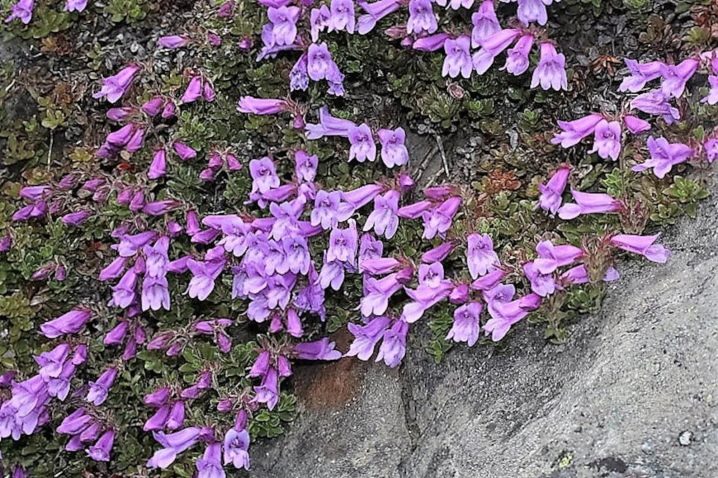
- Grade height Mystic reaches up to 0.7 meters. The foliage and stems are beige in color, which gradually turns into brown tones. Until the end of August, brushes of white fragrant flower cups bloom on the stems.
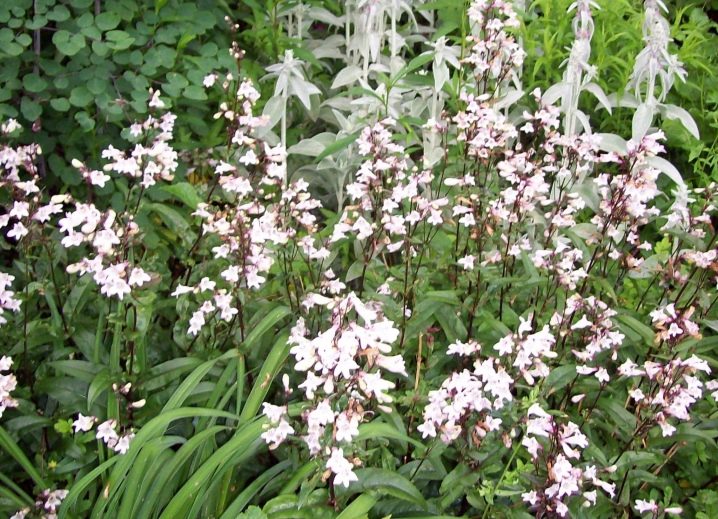
- Penstemon Bellflower decorated with miniature flowers of lilac-pink shades. Lanceolate leaves are light green in color.
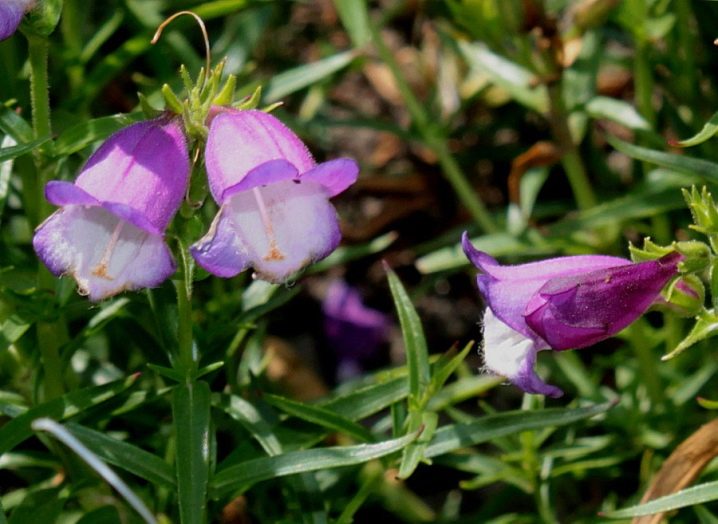
- Husker Red blooms in early May, flowers continue to bloom until October. Up to 0.7 meters high, brushes are pinkish-white.
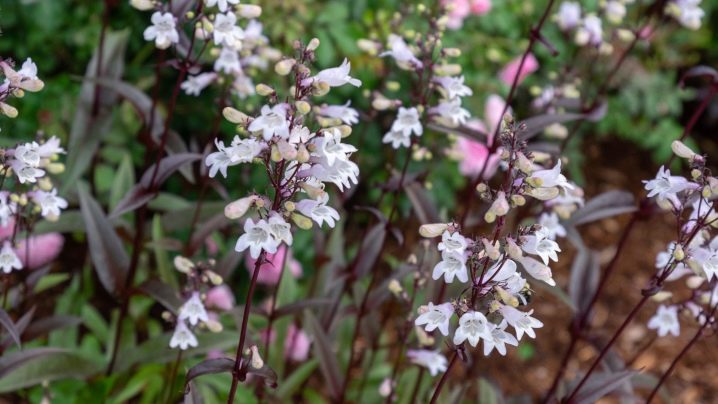
- Hybrid variety has a decorative look.The lanceolate foliage is slightly pointed upward, the flowers are bell-shaped purple in color.
The variety blooms actively throughout the warm period.
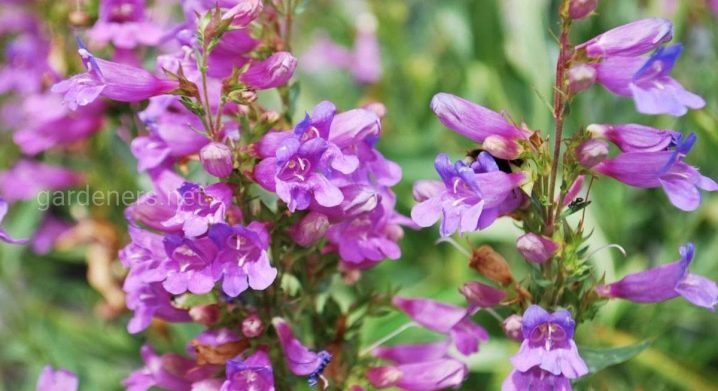
- Penstemon the Stiff-haired differs in the formation of miniature bushes up to 0.3 meters high. The leaf plates are covered with a delicate fluff, and the purple flowers are large.

- Pygmy variety has an extremely low height among its fellows - 0.2 meters. On the surface of the dark green foliage, there is a delicate fluff. Light lavender clusters bloom in July-August.
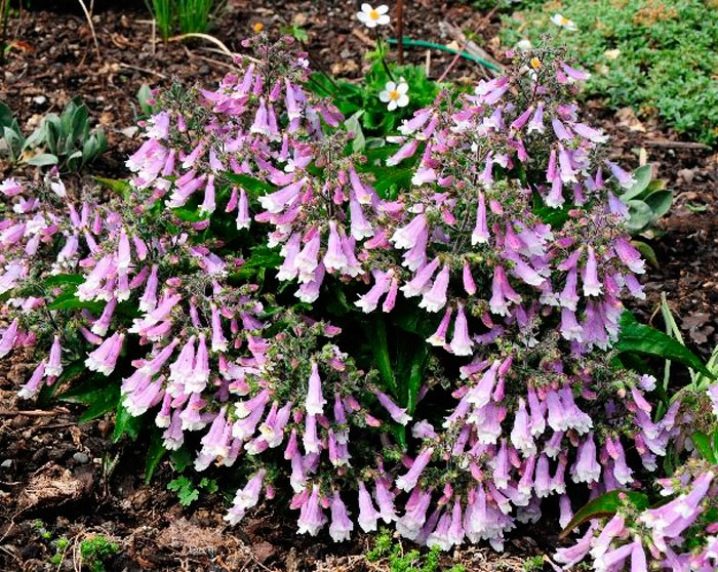
- Fruticosus Garnet or Shrub variety has miniature forms, is an evergreen variety of shrubs - 40 centimeters. The leaves are elliptical, the flowers are purple-blue.
Flowering begins in late spring, continuing until deep cold weather.
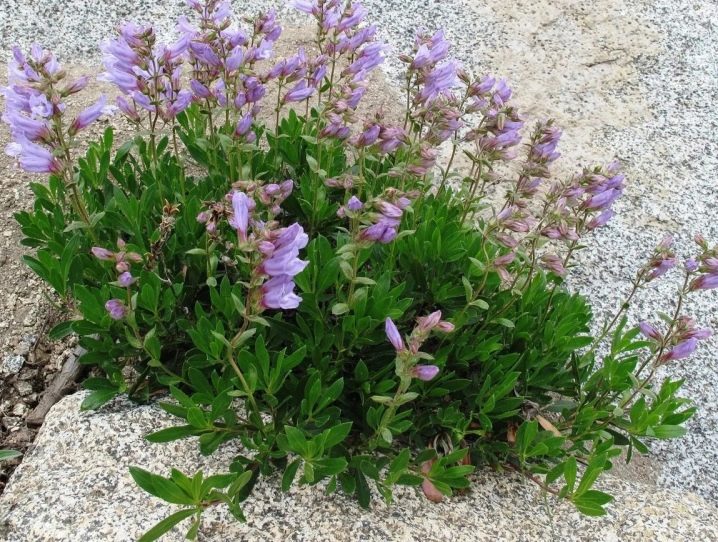
- Rich Ruby - perennial with scarlet flowers. Activity falls on the period from July to October. Differs in the rapid formation of basal rosettes.
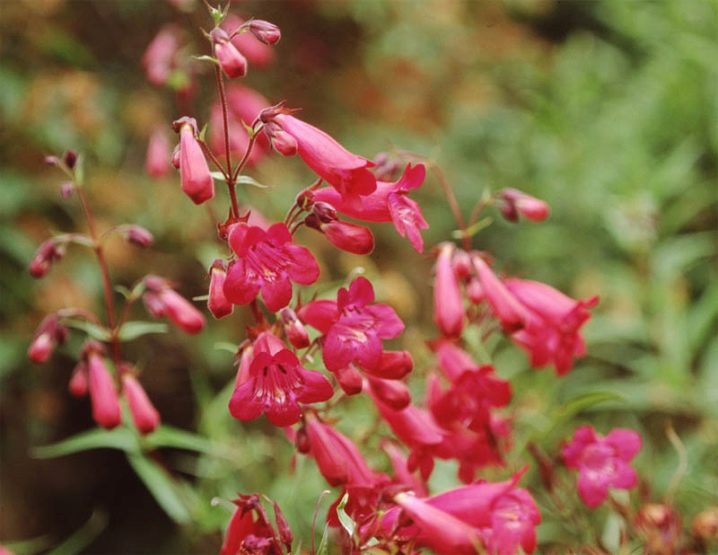
- White bedder - a medium-sized flower culture with enlarged white flowers. Suitable for all types of flower beds.

- Cobo variety it is distinguished by its height (1.2 meters) and splendor. The leaves are green, pointed at the ends. The brushes are decorated with pink-white or red-white flowers.
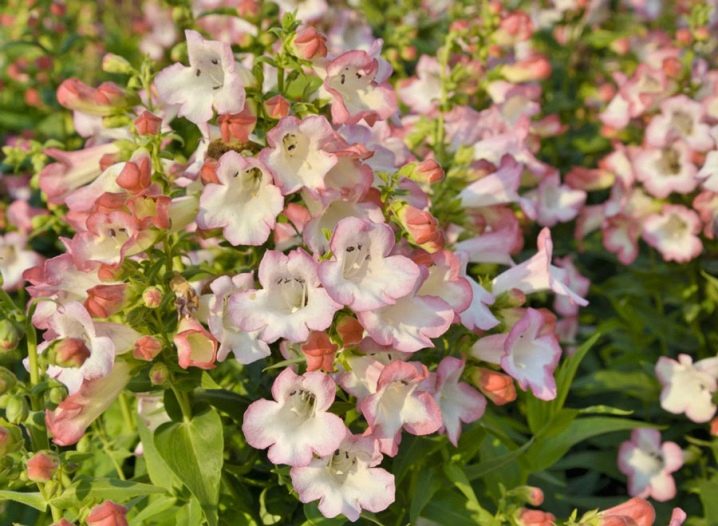
- Ice cream has lignified shoots and leaves with a pointed top. The huge flowers are colored purple.
Flowering continues throughout the warm period.

Sowing and planting in the ground
The flower is very photophilous, and therefore the place for planting is chosen with an abundance of sunlight, without drafts. The soil for planting should be well-drained, moderately moist. You can improve the looseness of the soil by adding peat. Liming of the soil should be excluded. From autumn or a month before planting in the spring, the flower bed is dug up with the addition of manure, sand and vermiculite.
Penstemon is grown at home from seeds. They are planted in different ways: in seedlings, by a non-seedling method. The optimal time for sowing seedlings is the end of winter, namely February. The soil mixture is poured into any convenient container, the seeds are sown, lightly sprinkled with earth. No need to water: experts recommend irrigating plantings from a spray bottle... Then we powder everything with dry sand, and we irrigate again. At the final stage, we cover the planting with plastic wrap or glass. It is better to put the container in a well-lit, warm place.
After 2 weeks, the first shoots can be observed. Caring for them is uncomplicated: airing, accurate watering, compliance with light and thermal conditions. After the appearance of the first true leaves, we recommend that they be sorted out in peat containers. Landing in open ground is carried out in late May - early June. But we advise you to prepare the soil much earlier (it can be from autumn). Of course, it is necessary to monitor temperature jumps, but the sooner the seedlings are in the beds, the faster they will delight you with magnificent flowering.
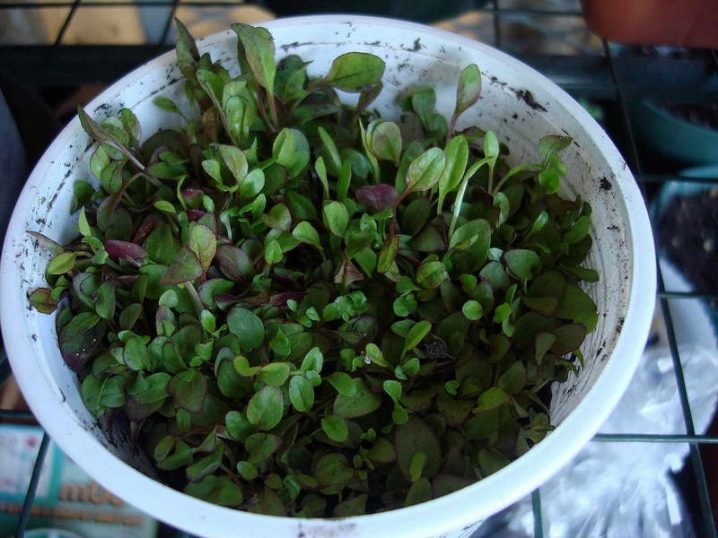
Care
In landscape design, lush inflorescences of any kind are valued for their unpretentiousness, beauty, and original design possibilities. After all, penstemon looks equally elegant on flower beds, in rabatkas, when creating a living green wall. And there is no need to talk about long-term flowering.
The cultivation and care of a flowering plant takes place according to the following scheme.
Watering
Watering should be systematic, especially for dry summers. There should be no stagnation of water either, therefore, the soil surface must be monitored visually. In addition, before planting seedlings in open ground, we advise you to lay a drainage layer of expanded clay or broken brick. After planting, we recommend each bush mulch with dry grass or a layer of peat.
After the next watering, experts advise to loosen the upper soil layers under the plant.
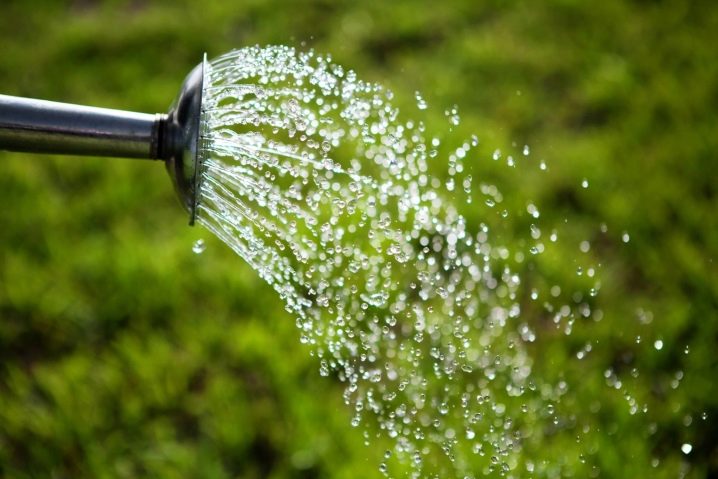
Top dressing
The first application of fertilizers occurs at the time of planting the plant in a permanent place. During this period, it is considered optimal to apply a layer of compost when digging.Organic matter is applied at least three times over a long season.
Before blooming, phosphate fertilizer is used according to the instructions. The effect will not be long in coming - flowering will be even longer and more luxuriant.
Fertilizer is best applied in the evenings along with watering.
To rejuvenate the bushes, the plant is recommended to be transplanted once every five years. Most often, this procedure is carried out together with bush division. The dug out plant is divided into 3-5 parts without damaging the root system. Young bushes take root well for about a month.
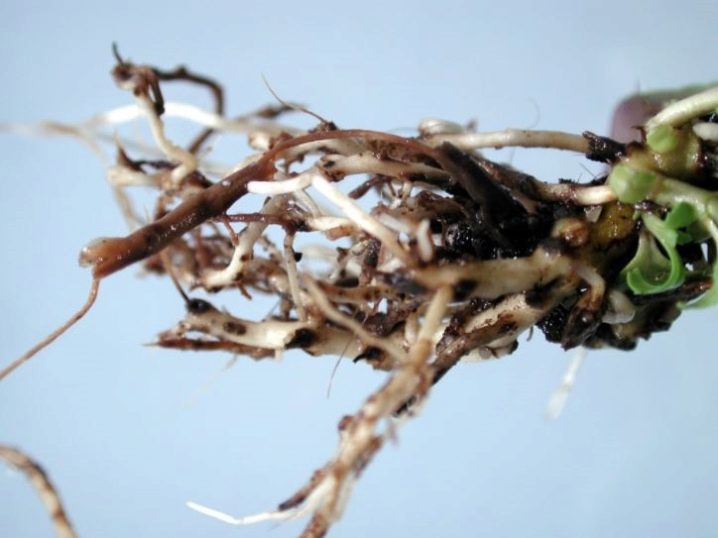
Pruning
With the onset of autumn cold weather, the plant is pruned: the stems must be completely cut off. During the entire summer period, in order to prolong flowering, experts advise cutting off dried stems, flowers and leaves.
With active growth, the bushes are thinned by a quarter.
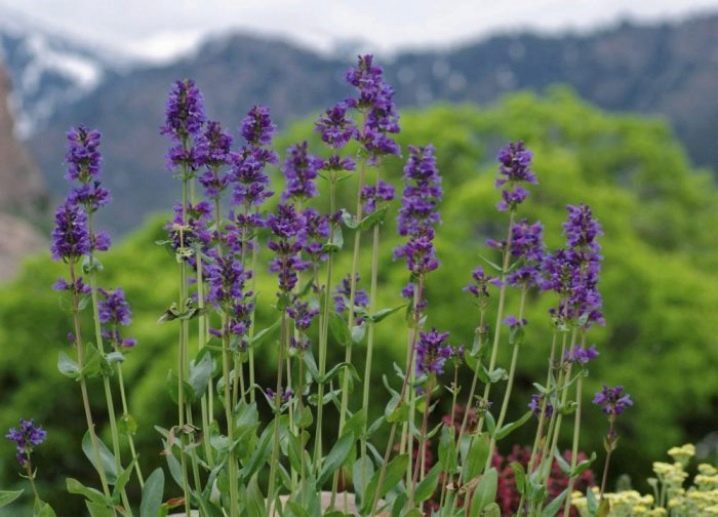
Preparing for winter
The bulk of cultivated varieties in the Russian Federation are perennials. Therefore, in late autumn, the bushes are cut off completely, leaving cuttings up to 5-7 centimeters on the surface of the earth. The rest is covered with spruce branches or fallen leaves. With the arrival of spring, it is better to immediately free the plant from the snow cover, in order to avoid decay of the root system.
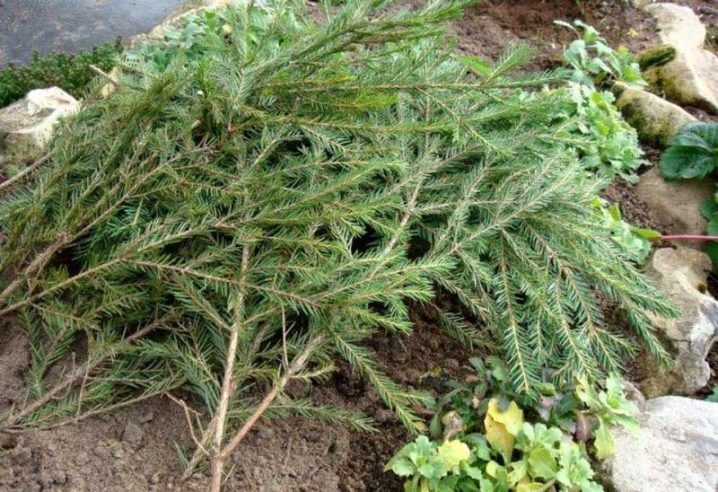
Reproduction
In a personal backyard, the following types of reproduction are practiced: cuttings, division by bushes, propagation by seeds. Let's describe each in more detail.
Cuttings
Before rooting, it is necessary to cut off the stems without inflorescences (these are future cuttings). The trimmed pieces are placed in a growth promoter solution. After that, we plant the soaked cuttings in a school in a shaded area, covering with a film or plastic container.
After rooting, future plants are planted in a permanent place.
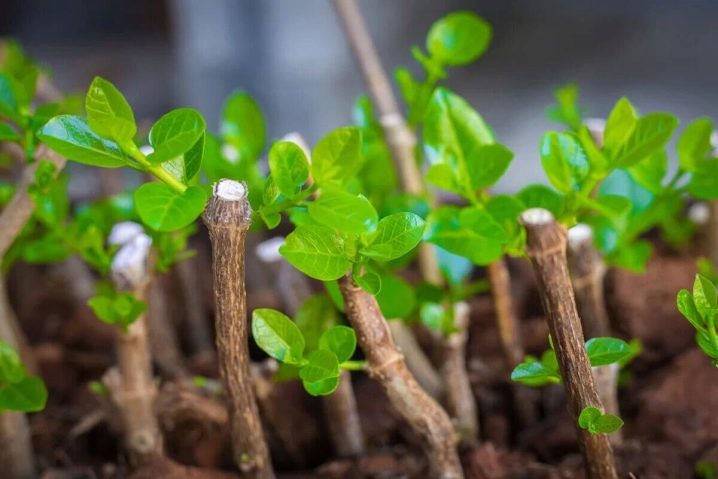
Dividing the bush
It is most convenient to divide the bush when transplanting. To do this, you need to dig a bush with a large clod of earth. After dividing into certain parts, each division is sent to a pre-prepared hole. Beginners should know that it is allowed to divide the bush if it is more than three years old. If you take a young plant for division, then it may die during transplantation. Sharing is allowed no more than once every five years. It is so convenient to rejuvenate the bushes, otherwise they begin to age quickly.
Reproduction by layers and seeds is less popular. Such methods are applicable to both curly and stunted varieties. To do this, a suitable stem must be slightly bent to the flower bed, sprinkled with soil. After the formation of the root system (after a month), you can cut off the bushes and engage in planting.
After the plant has faded and the seed pod is dry, carefully collect its contents. Seed material can be stored for a long time in a dry, ventilated place. First, we sow in a small container in the fall or with the arrival of spring using the technology described above. But some varieties are recommended to be stratified (Alpine variety). This applies to spring sowing. In the fall, the seeds are forcibly stratified.

Diseases and pests
The plant is rarely exposed to any ailments. But problems do arise from time to time. Sometimes the top of the plant dries up. In this case, there is no need to regret anything, and it is best to cut off all the shoots at the root. Otherwise, the bush may completely die, and after pruning it will quickly grow back.
With frequent watering, gray rot attacks the penstemon: the bushes are drying out. It is urgently recommended to loosen the soil around the bush, pour abundantly with dissolved fungicides.
Pests, as a rule, do not colonize flowering bushes.
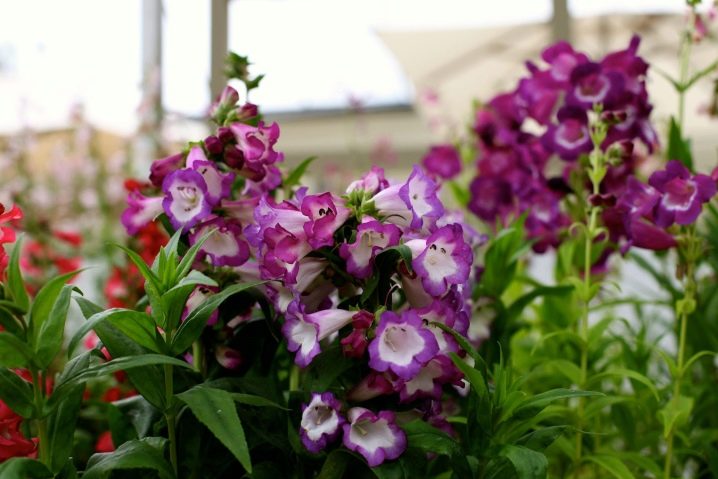
It is beneficial to grow Penstemon on your personal plot, because it is friendly to all plants, but only to those that grow with it at the same height. It is not recommended to plant undersized varieties nearby. Cooperation is considered successful if you plant chamomile, astilba, hyssop, corydalis, sedge, and daffodils nearby.
Among other advantages, it is worth highlighting endurance, durability, decorativeness, flowering duration.
Experienced growers successfully grow undersized varieties in wide, shallow pots at home or on a balcony.
A flowering plant in cut bouquets looks harmonious. Designers and gardeners like to decorate flower beds, flower beds, rabatki, alpine slides as part of a mix with assorted bushes.
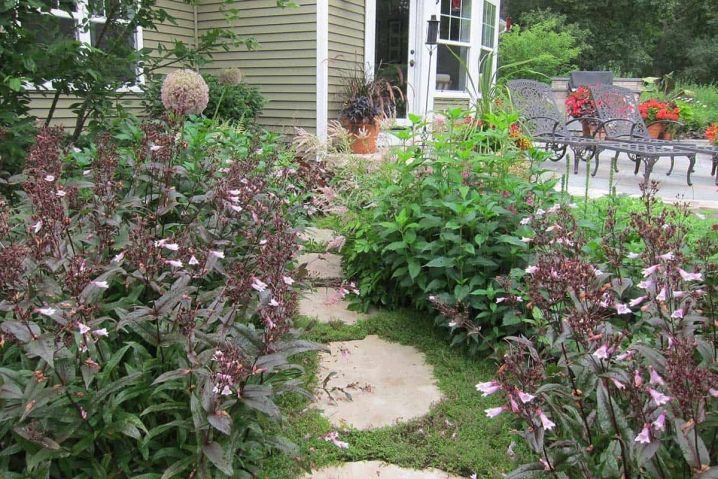



































































The comment was sent successfully.